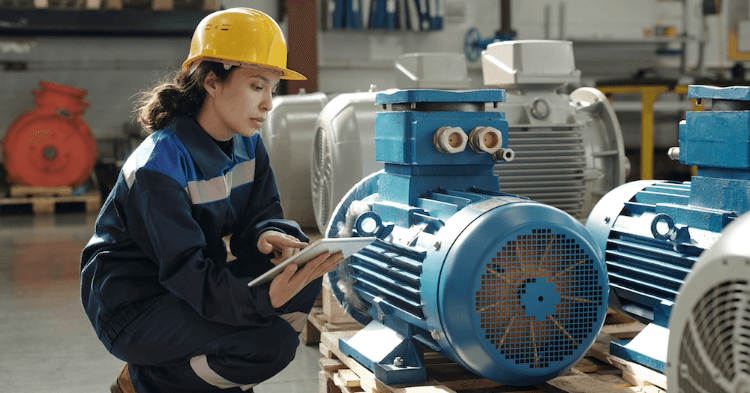Can I Get Financing for Used Equipment?

If you’re looking to purchase equipment for your business but you don’t want to break the bank, you may be considering used equipment. However, used equipment can still be expensive, and you may still need some help covering the costs.
Here are a few things you should consider when looking for equipment financing for your small business.
Can I Get Financing for Used Equipment?
Yes, you can get financing for used equipment purchases. Because used equipment financing is often secured by the equipment that’s purchased, some lenders may be hesitant to offer loans for older equipment. You may see higher interest rates, a more thorough appraisal process and shorter loan terms. Other options for financing used equipment include using unsecured business loans, such as a term loan or line of credit, to purchase the equipment.
As with any financial decision, you should do your research before making a decision — make sure the lender and the financing product fit your small business needs.
How Do I Get Financing for Used Equipment?
Getting financing for used equipment can work in much the same way as financing new equipment. However, equipment lenders often view used equipment as a higher risk given its reduced lifespan and potential for wear and tear. When choosing your equipment, keep in mind things like the equipment’s age and type, insurance and warranties, and the depreciation rate of the equipment, as they can all impact your equipment financing terms.
1. Determine what equipment you need and how much you’re willing to spend.
Before you dive into the financing process, it’s important to have a clear idea of the type of equipment you need, how much it costs and how much you’re able to afford. Consider whether the cost of the equipment is worth the price and how it will impact your business.
You should also keep in mind how much you can afford in financing payments. Different lenders may offer bi-weekly or monthly payments and the cost of borrowing can vary. Before applying, have a number that you can afford in mind. Remember, a larger down payment could help lower your future payments.
2. Research your equipment financing options.
When it comes to equipment financing you have options.
Equipment loan. An equipment loan is a business loan specifically designed for purchasing equipment. These types of loans are typically secured loans, with the purchased equipment acting as collateral. With these types of loans, you’ll typically receive a lump sum of cash up front that you’ll repay over time.
Business term loan. A business term loan is a traditional small business loan. They can be secured or unsecured. You’ll receive an upfront lump sum payment that you’ll repay over time. A business term loan is a good option for large one-time purchases, like equipment. An unsecured term loan doesn’t require collateral, which can make them a good option for financing used equipment.
Business line of credit. A business line of credit is a form of revolving credit. Borrowers receive a credit limit from which they can draw funds. As it’s repaid, the funds become available to borrow again. Funds from a business line of credit can be used to purchase equipment, and if the line of credit is unsecured, no collateral is required. Because the funds become available to borrow again after they’re repaid, you can also have a bit of cushion to help with cash flow as you get the new equipment up and running.
3. Find a lender and submit an application.
Once you’ve determined how much you need and what type of financing solution is right for you, you can start researching lenders and applying.
Research lenders. There are many types of lenders that offer small business financing. Traditional banks and credit unions may offer better interest rates and loan terms, but they often have a lengthy application process and strict qualification requirements. Alternative lenders, like online lenders, often have more lenient qualification requirements and the application process can be quick and easy.
Submit your application. Once you’ve chosen a lender, make sure to gather all the documents you need to apply, this can include things like bank statements, proof of ownership, tax returns, etc. Some lenders have online applications which can help speed up the process — but every lender is different. Once you’ve submitted your application the lender will review and make a decision.
4. Get your funds and purchase your equipment.
If you’re approved, you’ll receive a loan offer which you should review carefully. Be sure the terms, repayment schedule and other conditions are clear and make sense for your business. If you accept, the funds will likely be deposited into your business bank account. From there you can purchase the business equipment you need.
What Are Some Other Financing Solutions?
Equipment leasing. Equipment leasing is a financing option where the lender buys the equipment and rents it out to the business owner for a flat monthly fee. This type of financing can help businesses preserve working capital by avoiding the high upfront costs. At the end of a lease term, business owners may have the option of buying the equipment, renewing the lease or returning it to the lessor.
Should I Buy New Equipment or Used Equipment?
Deciding whether you should buy new or used equipment depends on your specific business and equipment needs.
New equipment. New equipment often comes with the latest technology and more advanced features. They also often offer warranties that protect you in case of defect or early failures. All of this, of course, adds up to a higher price tag.
Used equipment. Used equipment can be a more budget-friendly option. Especially for businesses with limited financial resources like new businesses and startups. While a used piece of equipment may not have the latest features, it’s often perfectly fine for many business needs. One of the downsides can be the wear and tear and shorter life span.
How Do I Qualify for Used Equipment Financing?
The qualifications required to be approved for equipment financing can vary from lender to lender. Banks and credit unions will often have stricter eligibility standards, but alternative lenders can be more lenient. You can often find a lender’s minimum requirements on their site.
Here are few requirements you should consider:
Minimum credit score. Many lenders will require the business owner to meet a minimum credit score. This requirement may carry less weight if you have established business credit.
Time in business. The amount of time you’ve been in business can affect your approval. This may be as little as a year.
Annual revenue. You may need to meet a certain threshold in annual revenue in order to be approved.
Collateral. You may also need to have some sort of collateral. When it comes to equipment financing, this is often the equipment itself. The condition of the equipment can impact the amount you can receive through a loan, so older and more worn equipment may mean you can receive less.
This content is for educational and informational purposes only, and is not intended as financial, investment or legal advice.
Find the right funding for your business.
Term loans up to $250K. Lines of credit up to $100K.
No obligations and no hard credit pulls.




